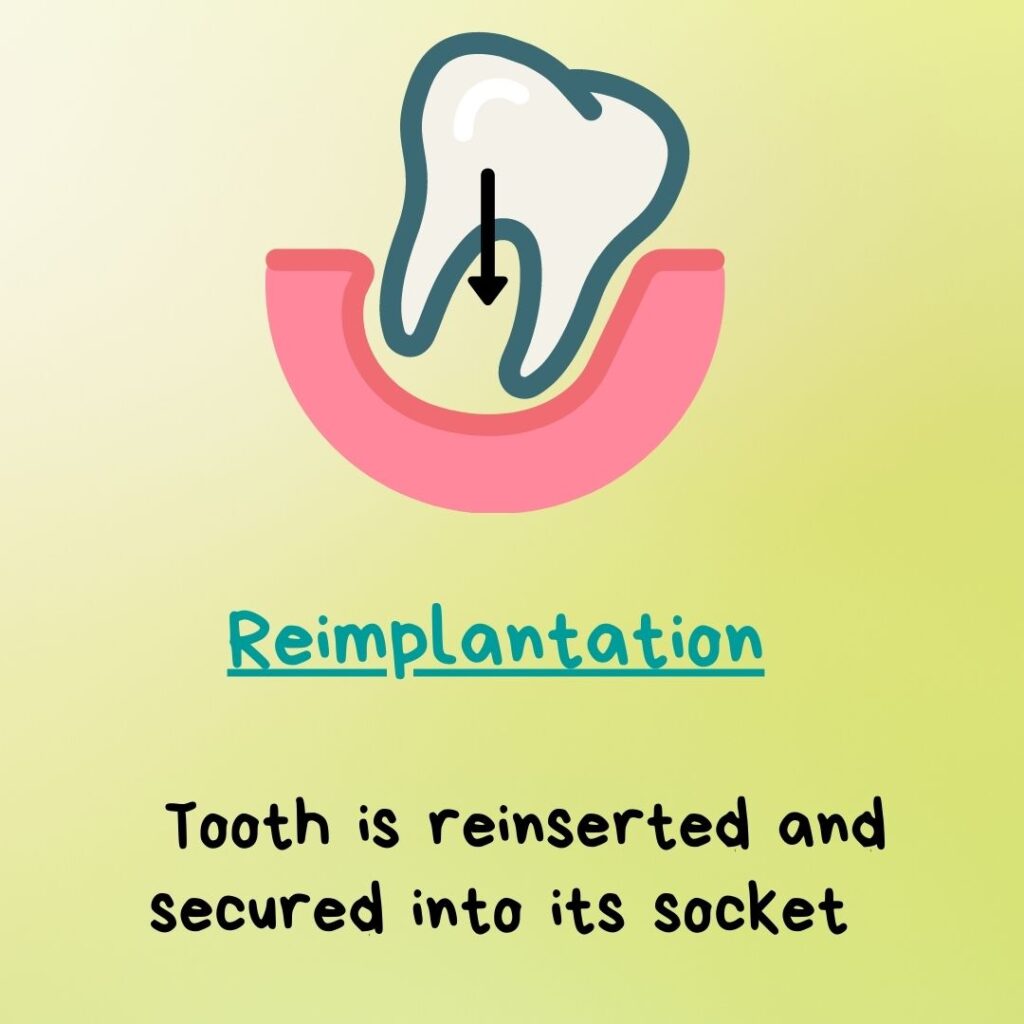Dental trauma is a common occurrence, especially among children and young adults. Among the most severe types of dental injuries are tooth avulsions — conditions where a tooth is either partially or completely displaced from its socket due to trauma. Timely and appropriate management of avulsed teeth can significantly affect prognosis.
Tooth Avulsion happens mostly among children particularly in school where they just keep running around, suddenly slip, hit a desk or hit a peer and the tooth falls off
If it’s a milk tooth then there is no issue. But if it is a permanent tooth, then immediate attention is required. Otherwise the child will have an artificial tooth for their lifetime
The more earlier you go the prognosis will be much better... The more you delay the chances of the tooth getting attached becomes less...
Partial Avulsion (Subluxation or Extrusion): A tooth is displaced but still remains partially attached in its socket. The periodontal ligament and neurovascular supply may be damaged, but the tooth is not entirely out.
Complete Avulsion (Exarticulation): The tooth is entirely displaced from its alveolar socket. This results in the severing of all periodontal ligament fibers, blood vessels, and nerves.
Conditions that can lead to Avulsion:
- Falls and sports-related injuries
- Motor vehicle accidents
- Physical assaults or fights
- Poor oral health or periodontal disease (can predispose to easier avulsion)
- Incomplete root formation in children (teeth are more vulnerable)
- Proclined Upper front teeth
Management of Avulsed Teeth:
Partial Avulsion
- Repositioning: The tooth is gently repositioned back into its normal alignment using finger pressure.
- Stabilization: Splinting done to stabilize the teeth.
- Pain Management: Analgesics and soft diet are recommended.
- Follow-up: Pulp vitality testing and monitoring for infection or necrosis.
Complete Avulsion
- Immediate Replantation (if possible): Placing the tooth back into the mouth.
Carrying Medium:
One important thing is how the fallen tooth is carried to the dentist? That will decide the success of the treatment. Mostly the mistake done is when the tooth falls off, it is washed, wrapped in a tissue and then brought to a dentist... If that happens, then that tooth is of no use... The best way to store the tooth is Hanks balanced salt solution but that will not be available with us handy. So Milk or the person’s own saliva can be used. They can spit the Saliva into a container and put the tooth inside that and then the dentist has to be visited within half an hour
Time Factor:
Best prognosis if replanted within 30 minutes. Beyond 60 minutes, chances of periodontal ligament healing decrease.
Post Care:
Frequent monitoring required for further treatment decisions
- Friendly Doctors
- Comfortable Office
- Affordable Pricing
- Family Friendly
- Convenient Location
- Little to no Wait Time
- Detailed Consultation
- Satisfaction Guarantee
- Accessibility
- Modern Equipment
- High-Quality Materials
- Best Treatment






